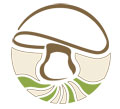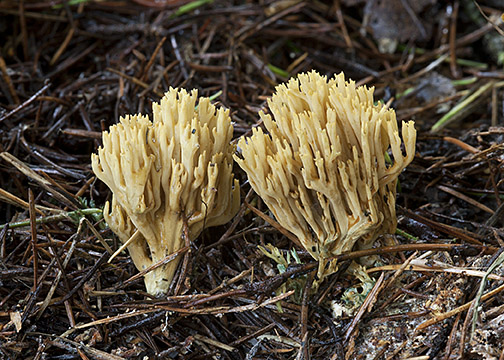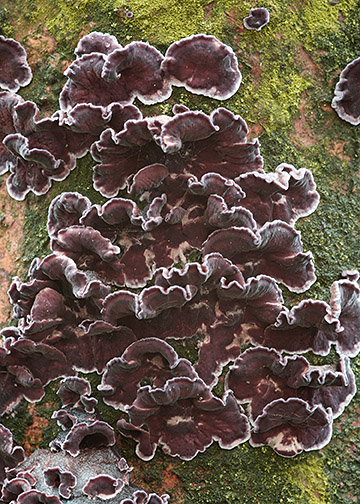Gilbert White Museum, Selbourne & Kingsley Church
Sat 24 Nov 2012
Field event ID HF1229
OS Grid areas: SU7433 & SU7838
Weather: Continuing mild and damp conditions including the whole duration of the foray!
Report: This foray had been arranged to explore the profusion of waxcaps seen in 2011. This year's fruiting did not appear to be as abundant and the continuous (although thankfully, light) rain did not encourage a long foray. The full group first started out in the grounds of Gilbert White's House, where the ancient turf revealed only a few fungi. The surroundings were more interesting, with a wonderful display of the purple Chondosterium purpureum (silver-leaf fungus) growing on (killing?) a bordering Laburnum and a good growth of what initially resembled a Melanoleuca but which Alan finally identified as being the well-named Rugosomyces obscurissimus (think Calocybe ionides without the colour!), which has been found previously by Phil Budd but had not been confirmed. Sue turned up with some very sodden “not-quite-Clitopilus” from some rank grassland “around the back of” a Cupressus, which Eric speculated just might be Leucopaxillus rhodoleucus and so it turned out to be - luckily the spores are very distinctive! On the way back to the cars, Alan collected Scytinostroma ochroleucum from a Yew to add a North Hampshire record to those from The Forest. As the rain was showing little sign of abating and Alan was nursing a heavy cold, most of the group declined the challenge of the long walk to a reported sighting of Herricium coralloides, leaving only Jonathan to make the trek and take the pictures. While the rest of the stragglers either went home or to the pub. Eric, June and Sarah went in search of further waxcaps in Kingsley cemetery and were not disappointed. Nine species were identified, including good displays of Hygrocybe virginea (Snowy waxcap), H punicea (Crimson waxcap) and H russocoriacea (Cedarwood waxcap), the latter smelling strongly of pencil shavings (or “russian leather” to the cognoscenti!), as well as good numbers of several spindles including the orange Clavaria luteoalba and the earth-tongue Geoglossum cookeanum. Just to add to the confusion for the identifier, Sarah came across a lone spathulate, yellow spindle, which turned out to be yet another Clavulinopsis fusiformis (Golden spindles), which hadn't read any of the identification guides. All in all not a bad morning's foray with a good list of the less common fungi.
Species list: Chondrostereum purpureum, Clavulinopsis corniculata, Clavulinopsis corniculata, Clavulinopsis fusiformis, Clavulinopsis helvola, Clavulinopsis luteoalba, Clitocybe fragrans, Coprinellus micaceus, Crepidotus luteolus, Cystoderma amianthinum, Exidia nucleata, Geastrum triplex, Geoglossum cookeanum, Gliophorus irrigatus, Gliophorus psittacinus, Hericium coralloides, Hygrocybe calciphila, Hygrocybe ceracea, Hygrocybe chlorophana, Hygrocybe conica, Hygrocybe punicea, Hygrocybe russocoriacea, Hygrocybe virginea, Hygrocybe virginea var. virginea, Hyphoderma argillaceum, Hyphodontia sambuci, Hypholoma fasciculare var. fasciculare, Laccaria amethystina, Laccaria laccata, Lepiota cristata, Lepista flaccida, Lepista nuda, Lepista nuda, Lepista sordida, Leptosporomyces mutabilis, Leucopaxillus rhodoleucus, Lycoperdon excipuliforme, Lycoperdon perlatum, Lycoperdon pyriforme, Mycena flavoalba, Postia caesia, Ramaria abietina, Rhodocollybia butyracea, Rugosomyces obscurissimus, Scytinostroma ochroleucum, Stereum hirsutum, Stropharia cyanea, Trametes versicolor, Tricholoma stiparophyllum, Tricholoma sulphureum var. sulphureum


